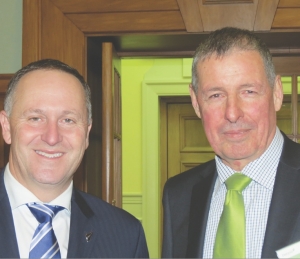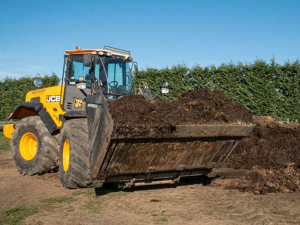The Prime Minister four years ago told us, “It is important farmers step up and take leadership on meeting some of the environmental challenges that will shape the future of your industry… to protect our environmental brand abroad and to keep faith with the New Zealand public who look to us as important custodians of the natural environment for this and future generations.”
We have responded as we are a dynamic industry and we continue to do things better.
A key challenge is making the most of a rising global demand for our valued and in-demand products – milk and beef – and to capture the benefits for dairy farming and for New Zealand.
As the title of our strategy says, we want to make dairy farming work for everyone. That is the single most important concept behind this strategy.
We have set out a strategy for taking dairy farming forward to 2020: to be competitive and responsible, because this strategy and our competitive advantage rely on what happens behind the farm gate – the area where New Zealand dairy farmers are world leaders.
We know the Government has a business growth agenda and dairying is a huge contributor to it. We are right behind that agenda in terms of working with the Government to continue to grow our export contribution to national prosperity. The work we are doing together through the Primary Growth Partnership is a big part of that.
New Zealand’s dairy farmers currently invest through their industry levy about $60m per year on research and development to improve our productivity and sustainability. We must remain competitive to have a future.
Milk production is New Zealand has grown 50% in the last ten years and reached 1.7 billion kgMS in 2012.
But the size and scale of our industry demand that we have a new plan for farming competitively and responsibly. And the New Zealand community has demanded it too. This is what this new strategy is all about.
We are an industry that cares for the land, produces the goods, drives local economies and national prosperity, and delivers as the largest dairy exporter in the world. This is something to be proud of – as a country and as dairy farmers.
We also want, and continue to be, caring custodians of the land. Kaitiakitanga. I especially want to the mention the support of the Federation of Maori Authorities, the iwi representatives and Maori farming trusts, for their willingness to join us on this journey and become ‘friends’ of our water accord. Maori agribusiness is keen to work in partnership with us. They are also now among our largest dairy farming businesses.
And we want and need to get better at showing New Zealanders how we are doing that, and what we are achieving particularly in the environmental space.
Our farmers invest tens of millions of dollars each year in effluent and water management systems, they have fenced over 20,000kms of waterways to exclude stock, we spend over $20m per year protecting native bush from pests through the TB-free programme, we protect special parts of our farms with QEII covenants, and we do a huge amount of riparian planting.
There is no other group of New Zealanders doing more for conservation in New Zealand than our dairy industry. We also claim to have a smaller environmental footprint than most dairy industries in today’s world and a smaller footprint per unit of production than we had ten years ago, despite the comments from some critics.
In DairyNZ we also now have a team of top environmental scientists helping us on the road to continual improvement.
The accord is the industry’s response to public concerns about our environmental stewardship. We are taking action. We are setting targets. We are making commitments, across the industry. We are stepping up to meet your expectations of us as farmers and businesses. We’re doing a pretty good job, but we are setting out to do better.
















